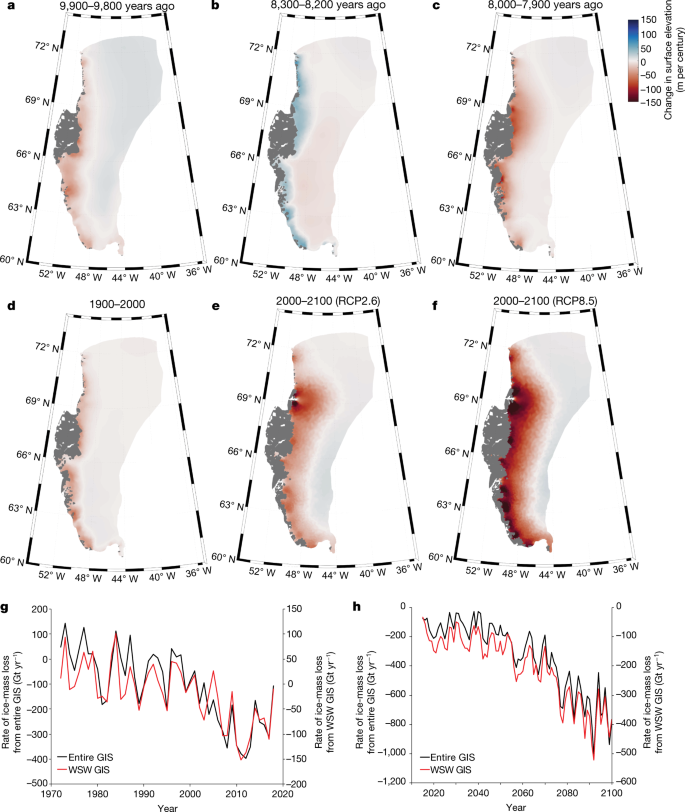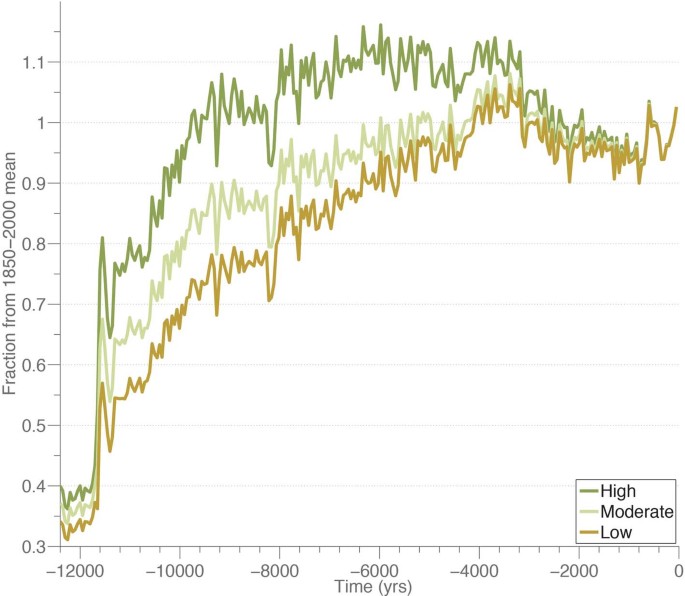Paper: Balco, G. (2020). Technical note: A prototype transparent-middle-layer data management and analysis infrastructure for cosmogenic-nuclide exposure dating. Geochronology, 2(2), 169-175. https://gchron.copernicus.org/articles/2/169/2020/
Paleo Datasets
Modern datasets for the Greenland Ice Sheet can be found here. Modern datasets for the Antarctic Ice Sheet can be found here.

Image: Sample taken for Greenland DRILL Project
Image Credit: Jason Briner
Ice Sheet Model Simulations
Ice sheet model simulations can help predict future behavior under different scenarios.
Greenland Ice Sheet Holocene Ice Mass Loss Simulations and Climate Reconstructions

ID: Greenland Holocene Ice Loss Simulation
Earliest Year: 20000 cal yr BP (-18050 CE)
Most Recent Year: -150 cal yr BP (2100 CE)
Data Format: Tab-delimited data

Citation: Jason P. Briner, Joshua K. Cuzzone, Jessica A. Badgeley, Nicolás E. Young, Eric J. Steig, Mathieu Morlighem, Nicole-Jeanne Schlegel, Gregory J. Hakim, Joerg M. Schaefer, Jesse V. Johnson, Alia J. Lesnek, Elizabeth K. Thomas, Estelle Allan, Ole Bennike, Allison A. Cluett, Beata Csatho, Anne de Vernal, Jacob Downs, Eric Larour, Sophie Nowicki. 2020. Rate of mass loss from the Greenland Ice Sheet will exceed Holocene values this century. Nature, 586(7827), 70-74. doi: 10.1038/s41586-020-2742-6
Climate Forcing
Climate forcings are factors that can disrupt the natural energy balance. These are important to model and predicthor our climate may change base on different changes, such as greenhouse gas emissions.
Late Pleistocene and Holocene Climate Forcing (Badgeley et al., 2020)

ID: Greenland Temperature and Precipitation Reconstructions for last 20ka
Earliest Year: 20000 cal yr BP (-18050 CE)
Most Recent Year: -150 cal yr BP (2100 CE)
Data Format: netCDF

Citation(s): Jason P. Briner, Joshua K. Cuzzone, Jessica A. Badgeley, Nicolás E. Young, Eric J. Steig, Mathieu Morlighem, Nicole-Jeanne Schlegel, Gregory J. Hakim, Joerg M. Schaefer, Jesse V. Johnson, Alia J. Lesnek, Elizabeth K. Thomas, Estelle Allan, Ole Bennike, Allison A. Cluett, Beata Csatho, Anne de Vernal, Jacob Downs, Eric Larour, Sophie Nowicki. 2020. Rate of mass loss from the Greenland Ice Sheet will exceed Holocene values this century. Nature, 586(7827), 70-74. doi: 10.1038/s41586-020-2742-6
Jessica Badgeley, Eric J. Steig, Gregory J. Hakim, and Tyler J. Fudge. 2020. Greenland temperature and precipitation over the last 20 000 years using data assimilation. Climate of the Past, 16, 1325–1346, doi: 10.5194/cp-16-1325-2020
Late Pleistocene and Holocene Climate Forcing (Buizert et al., 2018)

ID: Buizert et al. 2018 Data Files
Earliest Year: 22000 cal yr BP (-20050 CE)
Most Recent Year: -60 cal yr BP (2010 CE)
Data Format: netCDF, .txt, .xlsx

Citation: C. Buizert, B.A. Keisling, J.E. Box, F. He, A.E. Carlson, G. Sinclair, R.M. DeConto. 2018. Greenland-Wide Seasonal Temperatures During the Last Deglaciation. Geophysical Research Letters. . doi: 10.1002/2017GL075601
Ice Sheet Extents
Paleo ice sheet extents are observation-based, spatiotemporal limits of the former positions of ice sheets through time.
A Greenland-wide empirical reconstruction of paleo ice-sheet retreat informed by ice extent markers: PaleoGrIS version 1.0 (Leger et al., 2024)

ID: Early Holocene Ice Margin Positions
Earliest Year: 14000 cal yr BP
Most Recent Year: 6500 cal yr BP
Data Format: ESRI Shapefile

Citation: Leger, T. P. M., Clark, C. D., Huynh, C., Jones, S., Ely, J. C., Bradley, S. L., Diemont, C., and Hughes, A. L. C.: A Greenland-wide empirical reconstruction of paleo ice sheet retreat informed by ice extent markers: PaleoGrIS version 1.0, Clim. Past, 20, 701–755. doi: https://doi.org/10.5194/cp-20-701-2024
Ice Margin Positions in SW Greenland (Lesnek et al., 2020)

ID: Early Holocene Ice Margin Positions
Earliest Year: 25280 cal yr BP (-23330 CE)
Most Recent Year: 210 cal yr BP (1740 CE)
Data Format: ESRI Shapefile

Citation: Lesnek, Alia; Briner, Jason; Young, Nicolás; Cuzzone, Joshua. 2020. Maximum Southwest Greenland Ice Sheet Recession in the Early Holocene. Geophysical Research Letters, 47, e2019GL083164. doi: 10.1029/2019GL083164
Geochronology
ICE-D: Informal Cosmogenic-Nuclide Exposure-age Database
The ICE-D project is a computational infrastructure used to organize and serve cosmogenic-nuclide geochronologic data for large-scale analyses and data curation/presentation (Source: ICE-D Wiki).
Curated Datasets
Antarctic Ice Sheet Paleo-Constraint Database

Description: Database of observational constraints on past AIS changes during last glacial cycle, expansion on previous work done by Briggs and Tarasov (2013)
Data Format: .XLSX

The Baffin Bay Cosmogenic-nuclide Production Rate Calibration Dataset

Description: Calibration data for Baffin Bay, see publication:Young et al. (2013)
Data Format: Not specified
ICE-D

